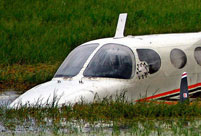VI. Environmental Protection and Ecological Improvement
Tibet serves as an important ecological safety barrier in China. Over the past few decades the central and regional governments have upheld scientific development, struck a balance between socio-economic development and environmental protection, and given priority to ecological conservation and environmental protection in China' s modernization drive. Vigorous efforts are being made to promote local ecological progress and build a beautiful Tibet. Being one of the areas with the best environmental quality in the world, most parts of the region have maintained their original natural states.
Ecological environment of the Tibet Plateau influenced by climate change
Scientific research findings show that the earth has entered a warming period over the past century. Due to its unique altitude, the Tibet Plateau has been influenced more strongly than surrounding areas by global warming. From 1961 to 2007 the Tibet Plateau registered an average temperature increase of over 0.3 degrees C every ten years, doubling the global average. Global warming has accelerated the retreat of glaciers. Over the past 30 years, the area of glaciers has decreased by 131 sq km annually on the Qinghai-Tibet Plateau and the permafrost has experienced patches of degradation, manifested by reduction of the seasonal frozen depth and rising thaw depth.
In the wake of global warming, remarkable changes have taken place in the ecosystem of the Tibet Plateau. Since the 1980s the vegetation has witnessed early greening, late withering and an average increase of ten days in the growing season. The vegetation coverage has been slightly raised overall, and the NPP (net primary productivity) has grown by around 11 percent. The NPP's remarkable growth has led to an increasing carbon sink in the alpine ecosystem. From 1980 to 2002 Tibet's alpine ecosystem created an average annual net carbon sink of 23 million tons, accounting for 13 percent of the total increased carbon sinks of all the earth' s vegetation in China, of which 17.6 million tons was produced by alpine grassland ecosystems every year. The vegetation ecosystem of the Tibet Plateau acts as one of China' s important areas for carbon sinks. At present, Tibet' s vegetation is improving as a whole. However, there are differences between different regions. The ecosystem is degrading in the southern areas with reduced rainfall, while it is improving in the northern areas with increased rainfall. Following the implementation of large national ecological projects and eco-compensation policies, Tibet has effectively curbed ecological degradation in areas intensely influenced by human activities, and further enhanced its function as an ecological safety barrier.
Strengthening legislation and planning for ecological conservation and environmental protection
Over the past few decades Tibet has remained the focus within the country' s general framework of environmental protection and ecological conservation. In the National Plan for Eco-environmental Improvement and the National Program for Eco-environmental Protection formulated by the State Council in 1998 and 2000, respectively, a separate plan has been drawn up to make the freeze-thawing zone on the Qinghai-Tibet Plateau one of the country's eight major areas for ecological improvement, complete with a number of explicit tasks and principles for work in this regard. According to the National Plan for Major Function-oriented Zones issued by the State Council in 2010, two of the 25 national key eco-function zones are located in Tibet, i.e., "forest zone on the edge of the plateau in southeast Tibet" and "desert zone on the Changtang Plateau in northwest Tibet." Covering areas of 97,750 sq km and 494,381 sq km, respectively, they account for nearly half of Tibet' s total area. In 2009 the State Council approved the Plan for Ecology Safety Barrier Protection and Construction in Tibet (2008-2030), aiming to basically complete the building of an ecology safety barrier by 2030 and give full play to its function. The Tibet Autonomous Region has drawn up and implemented a series of plans covering eco-environmental protection and construction, including the Eco-environmental Improvement Plan, Plan for Conservation of Water and Topsoil, Comprehensive Improvement Plan for the Environment in Farming and Pastoral Areas, Plan for Environmental Protection of Drinking Water Sources in Urban Areas, 12th Five-Year Plan for Comprehensive Prevention and Treatment of Heavy Metal Pollution, Plan for Pollution Control on the Upper Reaches of the "Five Rivers" (the Yarlung Zangbo, Lhasa, Nyangqu, Nyakchu and Nyang rivers), and Ecological Function Zoning. Meanwhile, Tibet is actively carrying out fundamental work in this field, including investigation of the status quo of the ecological environment, ecological function zoning, soil pollution investigation, ecological compensation research, basic survey of nature reserves, and investigation by remote sensing of eco-environmental changes during the period 2000-2010 and relevant evaluation, so as to provide a scientific basis for environmental protection and ecological conservation.
 |  |
 No news of survivors in Lao Airlines crash
No news of survivors in Lao Airlines crash Five fighters in flight training
Five fighters in flight training London mayor hails free trade, subway system on China tour
London mayor hails free trade, subway system on China tour Different eye catching shows at housing fairs in China
Different eye catching shows at housing fairs in China Chalk it up to great courage
Chalk it up to great courage Tibetan girl helps mobilize volunteers onlin
Tibetan girl helps mobilize volunteers onlin Lingerie show dazzles Wuhan Motor Show 2013
Lingerie show dazzles Wuhan Motor Show 2013  Chinese screen goddesses from Beijing Film Academy
Chinese screen goddesses from Beijing Film Academy  Weekly Sports Photos
Weekly Sports Photos Bayi Parachute Team of PLA Air Force
Bayi Parachute Team of PLA Air Force World has never been dark-- a blind kid’s life in Tibet
World has never been dark-- a blind kid’s life in Tibet Change to law may make it easier to sue polluters
Change to law may make it easier to sue polluters UNESCO world heritage site: Montale Tower
UNESCO world heritage site: Montale Tower U.S. Senate leader announces bipartisan deal
U.S. Senate leader announces bipartisan deal Fiber-optic wedding dress show shinning in Suzhou
Fiber-optic wedding dress show shinning in Suzhou Day|Week|Month